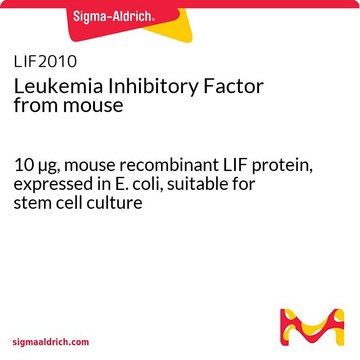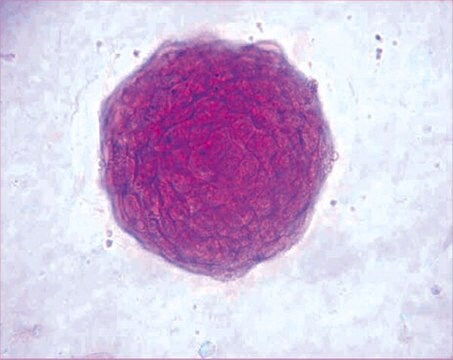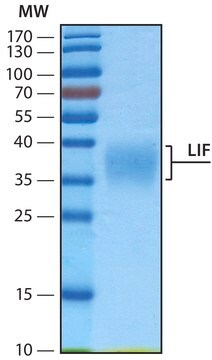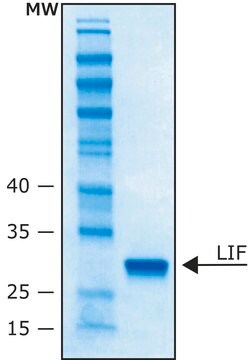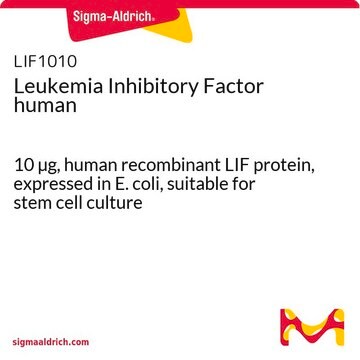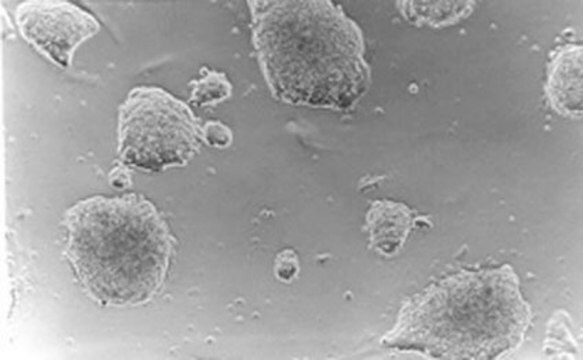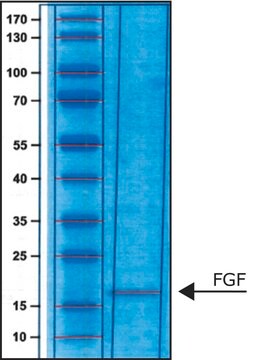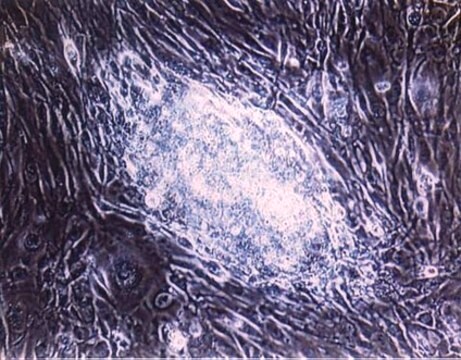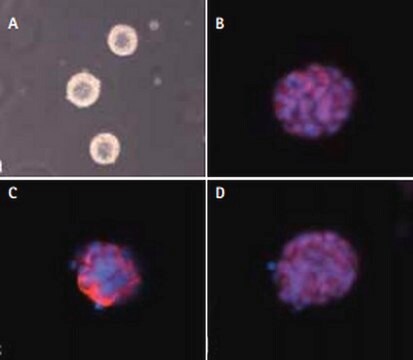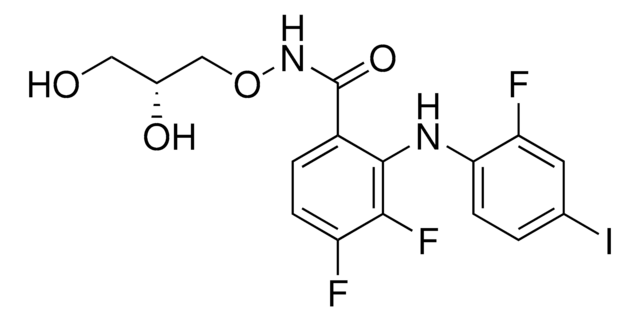L5158
Leukemia Inhibitory Factor from mouse
≥95% (SDS-PAGE), recombinant, expressed in E. coli, buffered aqueous solution, suitable for cell culture
Synonym(e):
LIF
About This Item
Empfohlene Produkte
Produktbezeichnung
Leukemia Inhibitory Factor from mouse, LIF, recombinant, expressed in E. coli, 10 μg/ml, buffered aqueous solution, suitable for cell culture
Rekombinant
expressed in E. coli
Qualitätsniveau
Assay
≥95% (SDS-PAGE)
Form
buffered aqueous solution
Qualität
endotoxin tested
Methode(n)
cell culture | mammalian: suitable
Lagertemp.
2-8°C
Suchen Sie nach ähnlichen Produkten? Aufrufen Leitfaden zum Produktvergleich
Anwendung
- as a component of enriched co-culture media
- as a supplement in Dulbecco′s modified eagle′s medium (DMEM)/F12 medium for culturing heart cells
- as a component in maintenance medium for maintaining embryonic stem cells
- to treat ovaries in ovarian culture
Biochem./physiol. Wirkung
Physikalische Form
Hinweis zur Analyse
Rechtliche Hinweise
Lagerklassenschlüssel
11 - Combustible Solids
WGK
WGK 3
Flammpunkt (°F)
Not applicable
Flammpunkt (°C)
Not applicable
Persönliche Schutzausrüstung
Eyeshields, Gloves, type N95 (US)
Hier finden Sie alle aktuellen Versionen:
Besitzen Sie dieses Produkt bereits?
In der Dokumentenbibliothek finden Sie die Dokumentation zu den Produkten, die Sie kürzlich erworben haben.
Kunden haben sich ebenfalls angesehen
Unser Team von Wissenschaftlern verfügt über Erfahrung in allen Forschungsbereichen einschließlich Life Science, Materialwissenschaften, chemischer Synthese, Chromatographie, Analytik und vielen mehr..
Setzen Sie sich mit dem technischen Dienst in Verbindung.